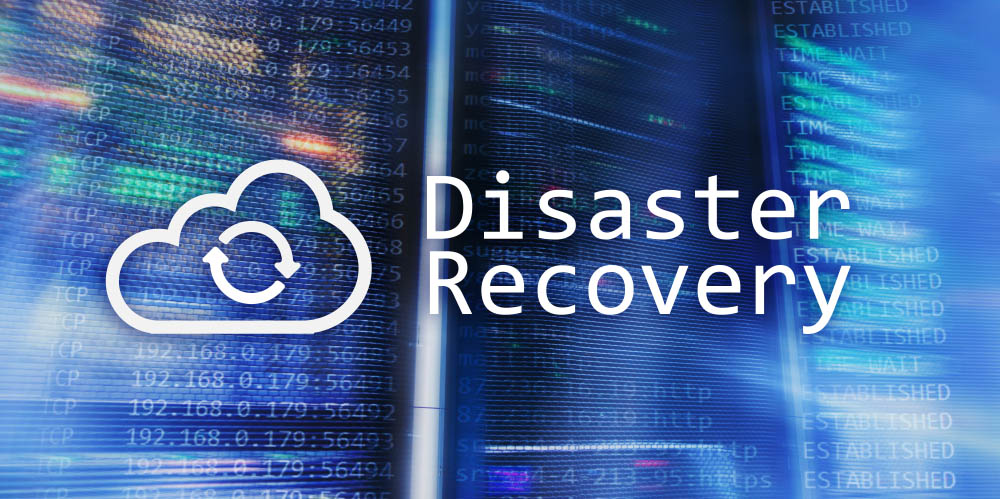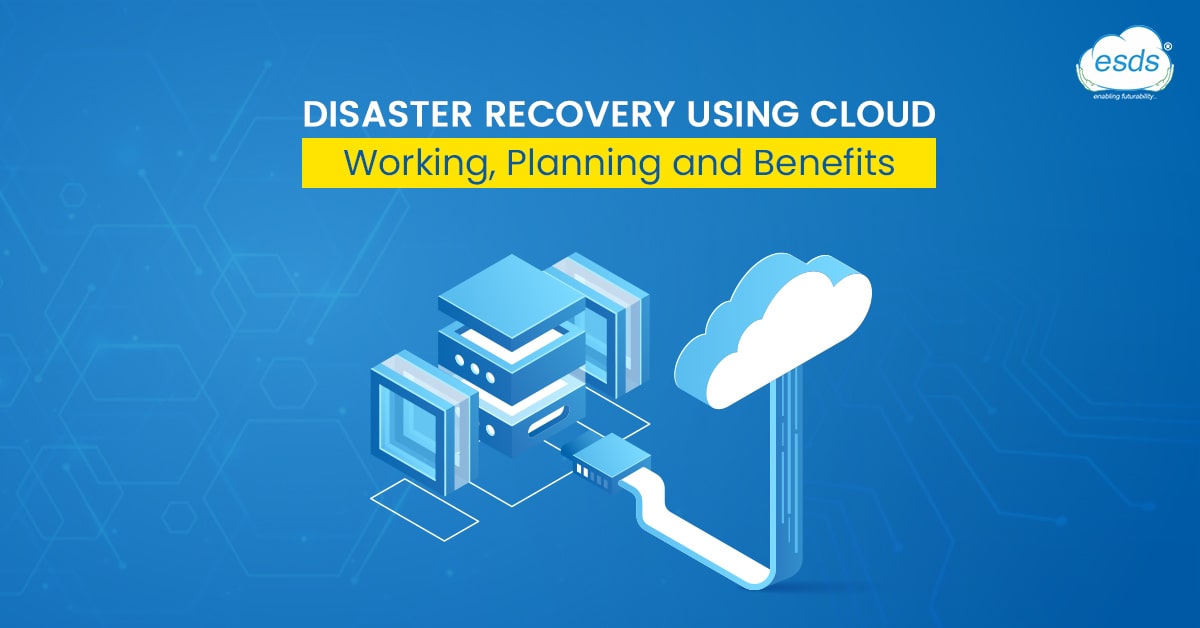Key Features to Look for in Cloud-based Disaster Recovery Solutions
When evaluating cloud-based disaster recovery solutions, there are several key features to consider to ensure that you choose a solution that meets your business needs. First and foremost, data security is crucial. Look for solutions that offer robust encryption, access controls, and compliance with industry standards such as HIPAA or GDPR. Additionally, consider the solution’s recovery time objectives (RTOs) and recovery point objectives (RPOs). RTOs refer to the amount of time it takes to restore normal operations after a disruption, while RPOs refer to the amount of data that can be lost during a disaster. A solution with fast RTOs and RPOs can help minimize downtime and data loss, reducing the impact on your business.
Scalability is another important feature to consider. As your business grows, your data and application needs will likely increase as well. A cloud-based disaster recovery solution that can scale with your business can help ensure that you have the necessary resources to protect your data and applications. Additionally, consider the solution’s pricing and cost structure. Some solutions may offer a flat fee, while others may charge based on the amount of data stored or the number of servers protected. Be sure to choose a solution that fits within your budget while still providing the necessary features and capabilities.

Top Cloud-based Disaster Recovery Solutions
When it comes to cloud-based disaster recovery solutions, there are several options available to businesses of all sizes. Here are some of the top solutions to consider:
Amazon Web Services (AWS) Disaster Recovery
AWS offers a range of disaster recovery services, including backup and restore, disaster recovery orchestration, and automated failover. With AWS, businesses can choose from a variety of pricing options, including on-demand, reserved, and spot instances. Additionally, AWS offers a disaster recovery readiness assessment to help businesses evaluate their current disaster recovery capabilities and identify areas for improvement.
Microsoft Azure Site Recovery
Azure Site Recovery is a cloud-based disaster recovery solution that helps businesses replicate and recover their applications and workloads in the event of a disaster. With Azure, businesses can choose from a variety of pricing options, including pay-as-you-go and reserved instances. Additionally, Azure offers a disaster recovery planner to help businesses create a customized disaster recovery plan.
IBM Cloud Disaster Recovery
IBM Cloud Disaster Recovery is a fully managed disaster recovery solution that helps businesses protect their critical workloads and applications. With IBM Cloud, businesses can choose from a variety of pricing options, including hourly and monthly billing. Additionally, IBM Cloud offers a disaster recovery assessment to help businesses evaluate their current disaster recovery capabilities and identify areas for improvement.
Veeam Cloud Disaster Recovery
Veeam Cloud Disaster Recovery is a cloud-based disaster recovery solution that helps businesses protect their virtualized and cloud-based workloads. With Veeam, businesses can choose from a variety of pricing options, including subscription-based and perpetual licensing. Additionally, Veeam offers a disaster recovery test feature to help businesses test their disaster recovery plans and ensure they are effective.
Google Cloud Disaster Recovery
Google Cloud Disaster Recovery is a cloud-based disaster recovery solution that helps businesses protect their workloads and applications. With Google Cloud, businesses can choose from a variety of pricing options, including on-demand and reserved instances. Additionally, Google Cloud offers a disaster recovery planner to help businesses create a customized disaster recovery plan.
When evaluating cloud-based disaster recovery solutions, it’s important to consider factors such as cost, scalability, and ease of use. Additionally, businesses should look for solutions that offer robust security features, fast recovery times, and flexible pricing options. By choosing a cloud-based disaster recovery solution that meets their needs, businesses can ensure they are prepared for any unexpected disruptions or disasters.

How to Implement Cloud-based Disaster Recovery
Implementing cloud-based disaster recovery solutions can seem like a daunting task, but with the right approach, it can be a straightforward and effective process. Here are the steps involved in implementing cloud-based disaster recovery:
Assess Your Needs
The first step in implementing cloud-based disaster recovery is to assess your needs. This includes identifying the critical applications and data that need to be protected, as well as determining your recovery time objectives (RTOs) and recovery point objectives (RPOs). RTOs refer to the maximum acceptable length of time that a system can be down, while RPOs refer to the maximum acceptable amount of data loss. By understanding your needs, you can choose a cloud-based disaster recovery solution that meets your requirements.
Select a Solution
Once you have assessed your needs, the next step is to select a cloud-based disaster recovery solution. When evaluating solutions, consider factors such as cost, scalability, and ease of use. Additionally, look for solutions that offer robust security features, fast recovery times, and flexible pricing options. Some of the top cloud-based disaster recovery solutions available include Amazon Web Services (AWS) Disaster Recovery, Microsoft Azure Site Recovery, IBM Cloud Disaster Recovery, Veeam Cloud Disaster Recovery, and Google Cloud Disaster Recovery.
Test Your Recovery Plan
Once you have selected a cloud-based disaster recovery solution, it’s important to test your recovery plan. This involves simulating a disaster scenario and verifying that your backup copies can be restored quickly and efficiently. By testing your recovery plan, you can identify any issues or gaps and make any necessary adjustments. Additionally, regular testing can help ensure that your disaster recovery plan remains up-to-date and effective.
Monitor Your Backups
After implementing cloud-based disaster recovery, it’s important to regularly monitor your backups to ensure they are running smoothly. This includes checking for any errors or issues, as well as verifying that your backup copies are complete and up-to-date. By regularly monitoring your backups, you can catch any issues early and prevent data loss or downtime.
Regularly Update Your Disaster Recovery Plan
Finally, it’s important to regularly update your disaster recovery plan to ensure it remains effective. This includes updating your RTOs and RPOs, as well as incorporating any changes to your applications or infrastructure. By regularly updating your disaster recovery plan, you can ensure that it remains aligned with your business needs and is ready to be implemented in the event of a disaster.
Implementing cloud-based disaster recovery solutions can help businesses protect their critical applications and data from disasters. By following these steps, businesses can ensure a smooth and effective implementation process, with the potential for long-term ranking and value for the reader.
Best Practices for Using Cloud-based Disaster Recovery Solutions
Cloud-based disaster recovery solutions offer numerous benefits for businesses, including cost savings, scalability, and quick recovery times. However, to ensure that you are getting the most out of your disaster recovery solution, it’s important to follow best practices. Here are some best practices for using cloud-based disaster recovery solutions:
Regularly Test Your Recovery Plan
One of the most important best practices for using cloud-based disaster recovery solutions is to regularly test your recovery plan. This involves simulating a disaster scenario and verifying that your backup copies can be restored quickly and efficiently. By regularly testing your recovery plan, you can identify any issues or gaps and make any necessary adjustments. Additionally, regular testing can help ensure that your disaster recovery plan remains up-to-date and effective.
Monitor Your Backups
After implementing cloud-based disaster recovery, it’s important to regularly monitor your backups to ensure they are running smoothly. This includes checking for any errors or issues, as well as verifying that your backup copies are complete and up-to-date. By regularly monitoring your backups, you can catch any issues early and prevent data loss or downtime.
Ensure Data Security
Data security is a critical consideration when using cloud-based disaster recovery solutions. Look for solutions that offer robust security features, such as encryption, access controls, and regular security updates. By ensuring data security, you can protect your business from data breaches and other security threats.
Regularly Update Your Disaster Recovery Plan
It’s important to regularly update your disaster recovery plan to ensure it remains effective. This includes updating your RTOs and RPOs, as well as incorporating any changes to your applications or infrastructure. By regularly updating your disaster recovery plan, you can ensure that it remains aligned with your business needs and is ready to be implemented in the event of a disaster.
Consider a Hybrid Disaster Recovery Solution
Hybrid disaster recovery solutions, which combine on-premises and cloud-based disaster recovery, can offer additional benefits for businesses. By using a hybrid disaster recovery solution, you can leverage the scalability and cost savings of the cloud while also maintaining the security and control of on-premises solutions. Additionally, hybrid disaster recovery solutions can provide faster recovery times and improved business continuity.
Work with a Managed Service Provider
Finally, consider working with a managed service provider (MSP) to implement and manage your cloud-based disaster recovery solution. An MSP can provide expertise and resources to help ensure a smooth and effective implementation process, as well as ongoing management and support. By working with an MSP, you can focus on your core business operations while ensuring that your disaster recovery needs are being met.
By following these best practices, businesses can ensure that they are getting the most out of their cloud-based disaster recovery solutions. By regularly testing their recovery plan, monitoring backups, ensuring data security, and regularly updating their disaster recovery plan, businesses can protect their critical applications and data from disasters and ensure business continuity.

Case Study: Successful Implementation of Cloud-based Disaster Recovery
Cloud-based disaster recovery solutions offer numerous benefits for businesses, including cost savings, scalability, and quick recovery times. However, it can be challenging to know where to start when implementing a cloud-based disaster recovery solution. Here is a real-world example of a company that successfully implemented a cloud-based disaster recovery solution, including the challenges they faced and the benefits they experienced.
XYZ Corporation is a mid-sized manufacturing company with operations in three different states. After experiencing a major data loss due to a power outage, XYZ Corporation decided to implement a cloud-based disaster recovery solution to protect their critical applications and data. However, they faced several challenges during the implementation process.
First, XYZ Corporation needed to assess their disaster recovery needs and determine the appropriate recovery time objectives (RTOs) and recovery point objectives (RPOs) for their applications and data. They worked with a managed service provider (MSP) to conduct a thorough risk assessment and determine the appropriate RTOs and RPOs for their business needs.
Next, XYZ Corporation needed to select a cloud-based disaster recovery solution that met their needs and budget. They evaluated several different solutions based on features, benefits, and pricing. Ultimately, they selected a solution that offered robust data security, fast recovery times, and scalability.
After selecting a solution, XYZ Corporation worked with the MSP to test their recovery plan and ensure that their backup copies could be restored quickly and efficiently. They also implemented regular monitoring and testing to ensure that their disaster recovery solution remained effective and up-to-date.
Since implementing the cloud-based disaster recovery solution, XYZ Corporation has experienced numerous benefits. They have been able to significantly reduce their recovery times, ensuring that their critical applications and data are available quickly in the event of a disaster. Additionally, they have been able to reduce their overall disaster recovery costs by leveraging the scalability and cost savings of the cloud.
However, XYZ Corporation also faced several challenges during the implementation process. One of the biggest challenges was determining the appropriate RTOs and RPOs for their business needs. Additionally, they needed to ensure that their cloud-based disaster recovery solution was properly integrated with their existing infrastructure and applications.
In conclusion, XYZ Corporation’s successful implementation of a cloud-based disaster recovery solution demonstrates the benefits of having a disaster recovery plan in place to protect critical applications and data from unexpected downtime and data loss. By working with a managed service provider and following best practices, businesses can ensure a smooth and effective implementation process and protect their business from disasters.

Top Cloud-based Disaster Recovery Solutions to Consider
Understanding Cloud-based Disaster Recovery
Cloud-based disaster recovery is a method of protecting data and applications from disasters by storing backup copies in the cloud. This approach offers numerous benefits, including cost savings, scalability, and quick recovery times.
Key Features to Look for in Cloud-based Disaster Recovery Solutions
When evaluating cloud-based disaster recovery solutions, there are several key features to consider. These include data security, recovery time objectives (RTOs), and scalability. Data security is critical to ensure that backup copies are protected from unauthorized access or data breaches. RTOs determine how quickly backup copies can be restored in the event of a disaster. Scalability is important to ensure that the solution can grow with the business and accommodate increasing data volumes.
Top Cloud-based Disaster Recovery Solutions
There are several top cloud-based disaster recovery solutions available, including Amazon Web Services (AWS) Disaster Recovery, Microsoft Azure Site Recovery, and IBM Cloud Disaster Recovery. These solutions offer a range of features and pricing options, making them suitable for businesses of all sizes. AWS Disaster Recovery offers automated disaster recovery testing and multi-region replication, while Azure Site Recovery offers built-in replication and failover capabilities. IBM Cloud Disaster Recovery offers flexible pricing and customizable recovery plans.
How to Implement Cloud-based Disaster Recovery
Implementing cloud-based disaster recovery involves several steps, including assessing your needs, selecting a solution, and testing your recovery plan. It is important to work with a trusted provider and follow best practices to ensure a successful implementation.
Best Practices for Cloud-based Disaster Recovery
Best practices for cloud-based disaster recovery include regularly testing your recovery plan, monitoring your backups, and ensuring data security. It is also important to keep up-to-date with the latest trends and technologies in cloud-based disaster recovery.
Case Study: Successful Implementation of Cloud-based Disaster Recovery
XYZ Corporation is a mid-sized manufacturing company with operations in three different states. After experiencing a major data loss due to a power outage, XYZ Corporation decided to implement a cloud-based disaster recovery solution to protect their critical applications and data. By working with a trusted provider and following best practices, XYZ Corporation was able to successfully implement a cloud-based disaster recovery solution and protect their business from unexpected downtime and data loss.
Common Misconceptions about Cloud-based Disaster Recovery
There are several common misconceptions about cloud-based disaster recovery, including the belief that it is too expensive or complex for small businesses. In reality, cloud-based disaster recovery solutions can be cost-effective and easy to implement. By understanding the benefits and debunking common misconceptions, businesses can ensure that their critical data and applications are protected from unexpected downtime and data loss.
Future Trends in Cloud-based Disaster Recovery
Emerging trends in cloud-based disaster recovery include the use of artificial intelligence and machine learning to improve recovery times and the adoption of hybrid disaster recovery solutions. By staying up-to-date with the latest trends and technologies, businesses can ensure that their cloud-based disaster recovery solution remains effective and efficient.
Conclusion: The Importance of Cloud-based Disaster Recovery
Cloud-based disaster recovery solutions offer numerous benefits for businesses of all sizes. By adopting a cloud-based disaster recovery solution, businesses can ensure that their critical data and applications are protected from unexpected downtime and data loss. By understanding the key features, top solutions, and best practices for cloud-based disaster recovery, businesses can ensure a successful implementation and protect their business from unexpected disasters.

Future Trends in Cloud-based Disaster Recovery
Cloud-based disaster recovery solutions are constantly evolving, and there are several emerging trends that organizations should be aware of. These trends have the potential to significantly improve recovery times, reduce costs, and enhance overall resiliency.
Artificial Intelligence (AI) and Machine Learning (ML): AI and ML are being increasingly integrated into cloud-based disaster recovery solutions to improve recovery times and automate processes. For example, ML algorithms can be used to analyze historical data and predict future failure points, enabling organizations to proactively address potential issues before they become critical. AI can also be used to automate the failover and failback processes, reducing the need for manual intervention and minimizing downtime.
Hybrid Disaster Recovery Solutions: Hybrid disaster recovery solutions, which combine on-premises and cloud-based resources, are becoming more popular as organizations look to balance the benefits of cloud-based disaster recovery with the need for local control and security. Hybrid solutions enable organizations to leverage the scalability and cost-effectiveness of the cloud while still maintaining control over their most critical data and applications. Additionally, hybrid solutions can provide a more seamless recovery experience, as data and applications can be recovered both on-premises and in the cloud.
Ransomware Protection: Ransomware attacks are becoming more frequent and sophisticated, and organizations must take steps to protect themselves. Cloud-based disaster recovery solutions can play a critical role in ransomware protection by providing a secure, off-site backup of critical data. Additionally, some cloud-based disaster recovery solutions offer immutable backups, which cannot be modified or deleted, providing an additional layer of protection against ransomware attacks.
Cost Optimization: Cost optimization is a key concern for organizations implementing cloud-based disaster recovery solutions. To address this concern, many vendors are offering new pricing models, such as pay-as-you-go and reserved instances, that enable organizations to better manage their costs. Additionally, some vendors are offering automated tools that can help organizations optimize their resource utilization and reduce costs.
Integration with DevOps and CI/CD: Cloud-based disaster recovery solutions are increasingly being integrated with DevOps and continuous integration/continuous deployment (CI/CD) processes. This integration enables organizations to automate the disaster recovery process, reducing downtime and minimizing the impact on development and deployment cycles. Additionally, it enables organizations to test their disaster recovery plans more frequently, ensuring that they are always up-to-date and effective.
In conclusion, cloud-based disaster recovery solutions are constantly evolving, and organizations should be aware of emerging trends in order to take advantage of new capabilities and improve their overall resiliency. By leveraging AI and ML, hybrid disaster recovery solutions, ransomware protection, cost optimization, and integration with DevOps and CI/CD, organizations can improve their disaster recovery capabilities and better protect themselves against unexpected downtime and data loss.
ARTICLE=””
Conclusion: The Importance of Cloud-based Disaster Recovery
Cloud-based disaster recovery solutions offer numerous benefits for businesses of all sizes, including cost savings, scalability, and quick recovery times. By storing backup copies of critical data and applications in the cloud, organizations can ensure business continuity and protect themselves against unexpected downtime and data loss. However, it is essential to have a disaster recovery plan in place to ensure that the solution is effective and meets the organization’s needs.
When evaluating cloud-based disaster recovery solutions, organizations should consider several key features, including data security, recovery time objectives, and scalability. These features can help ensure that the solution meets the organization’s needs and provides the necessary level of protection. Additionally, organizations should regularly test their recovery plans, monitor their backups, and ensure data security to ensure that the solution remains effective over time.
Emerging trends in cloud-based disaster recovery, such as the use of artificial intelligence and machine learning to improve recovery times and the adoption of hybrid disaster recovery solutions, offer exciting opportunities for organizations to improve their disaster recovery capabilities. By staying up-to-date with these trends and implementing best practices, organizations can better protect themselves against unexpected disruptions and ensure business continuity.
In conclusion, cloud-based disaster recovery solutions are an essential component of a comprehensive disaster recovery plan. By implementing a solution that meets their needs and regularly testing and monitoring their backups, organizations can ensure business continuity and protect themselves against unexpected downtime and data loss. With the ever-evolving landscape of cloud-based disaster recovery, it is essential for organizations to stay informed and adapt to emerging trends to ensure the continued protection of their critical data and applications.
ARTICLE=””

